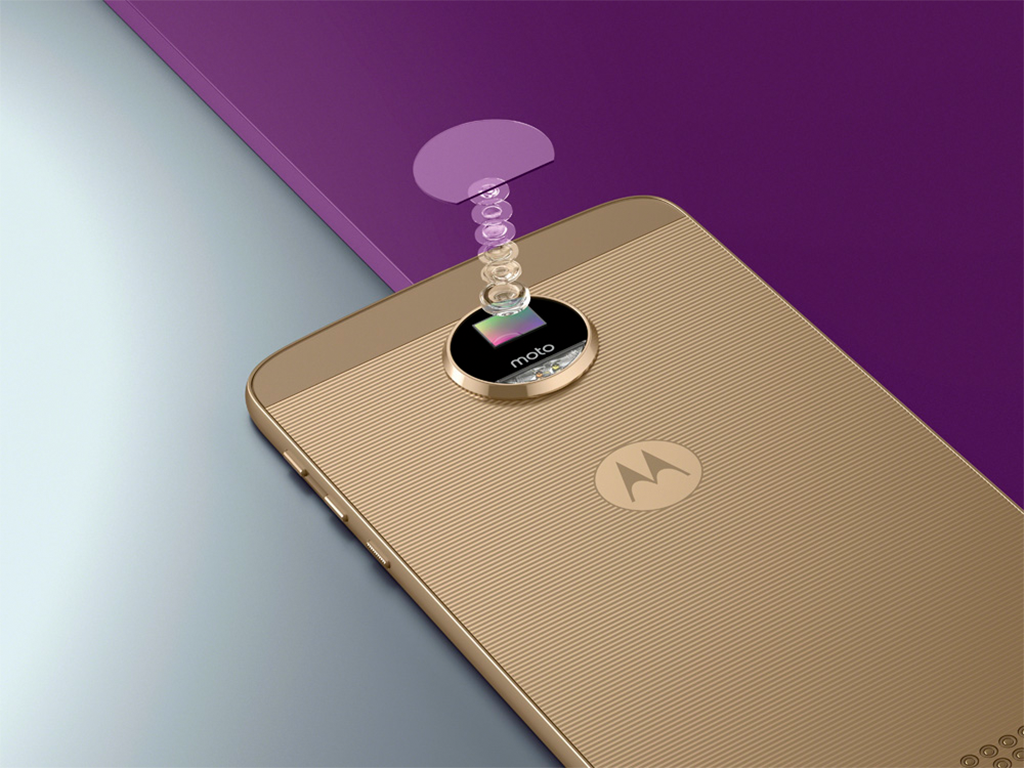The IT giant Lenovo managed to achieve a brilliant coup with its modular smartphone concept, introduced in mid-2016. The Chinese company was one of the largest attractions in the industry and, for a time, enjoyed more attention than the top dogs Apple and Samsung. It's still too early to guess if the innovative concept that stood out from the bland mass of smartphones will go down well with consumers, but one thing is for sure: Lenovo's approach is better than that of LG or Google. Lenovo needs a victory, because while they can claim to be the world's leader in computers, their domestic smartphone market is coming under increasing pressure from emerging brands like Oppo and Xiaomi. Success in Europe has bought some breathing space as a result of the purchase of Motorola's smartphone division in 2014, because their products are being sold under the brand of Moto. The offensive marketing of the Moto Z and Z Play really shows that Lenovo is pushing hard in Germany at the moment. Everyone has probably stumbled across adverts for both smartphones at least once.






So thin it could be a record
At first glance you can hardly tell the Moto Z and Z Play apart. The wide frame is striking as it leaves lots of room for a front camera complete with LED flash on top and a square fingerprint sensor at the bottom. You could call this wasted space, because we would have preferred to see a considerably slimmer frame around the screen. Measuring at 155 x 75 mm, the 5.5-inch Moto Z is almost as big as the Huawei Mate 9 (157 x 79 mm), but the Huawei has a much larger 5.9-inch screen. On the other hand, the Moto Z is so light and thin it might be a new record: we weighed it at 136 grammes and measured it to be 5.2 mm at its thinnest spot. The camera clearly protrudes from the casing, but even with this bump the smartphone is still thinner than most other models at 7.7 mm. The headphone jack has fallen victim to the super-slim range as drilling the hole for this would have made the thin aluminium frame unstable. Therefore, you can only listen to music via Bluetooth or via an adapter, which, in contrast to headphones, is included in the box. This small part is easy to lose in your bag or pocket and cannot be used while charging the phone. That means the user pays a high price for this ultra-slim smartphone figure. At least the casing integrity does not suffer under the flat design. The Moto Z is warp resistant and makes a premium impression in every sense, even the finish is top notch. There is no IP certification, but at least a nano coating protects the device from splashes. The back is mostly made out of metal with just a thin glass strip on the top and bottom to improve the communication capabilities. Although it's made of high-end materials throughout, only few will enjoy holding the Moto Z in their hand. This is down to the angular transition from the frame to the smooth reverse, which is so distinct that it makes the phone actively unpleasant to hold. Luckily, there is a "Style Shell" in the box, which is a roughly 2.5-mm-thin plate with a nylon surface that covers the entire back of the smartphone and is simple to apply. A magnetic fixing holds the module in place and you have to apply a lot of force to get it off again. Motorola currently offers these Style Shells in textile, leather, and wood in different colours at €20-27. They are a welcome opportunity to give the smartphone an individual touch, especially given that the colour and material combinations usually offered by the Motomaker smartphone model kit are hardly to be found - you only have the choice between a white-gold and black-silver casing.
PRO
- Extraordinarily thin and light
- Premium design and finish
- Functions and design can be customised with modules
- Good camera features
- Hybrid slot for dual-SIM or micro SD
- Lean Android system with quick updates
- Excellent wireless features
CONTRA
- No headphone jack
- No headphones in box
- No USB cable in box
Bearable differences
The Moto Z Play seems downright podgy in comparison, although it is also very thin at 7 mm and has an average weight of 165 grammes. Despite the entire back being covered in a glass plate, the look and feel are hardly inferior to the much more expensive Moto Z. In our opinion, it rests even better in your hand without the Style Shell. On paper, the technical differences are considerable, but are barely noticeable in everyday life. For example the display: Lenovo uses a 5.5-inch OLED for both models that score highly with intense colours and great contrasts. The brightness is in the normal range for this technology, although the differences we measured were marginal and not visible. The same goes for the resolution, because while the Moto Z's display boasts almost twice as many pixels at 2560 x 1440 as the Moto Z Play, you can only see this with the naked eye if you look really close. The Quad HD resolution does make a difference when you use the smartphone for VR content. We found the same with the processor, as while the Z is equipped with Qualcomm's top-of-the-range Snapdragon 820 and 4 GB of RAM, the Z Play has to make do with the mid-range SoC Snapdragon 625 and 3 GB of RAM. However, this gap in performance is only visible in benchmarks and both models react smoothly and without delay in everyday use. Another difference is that the Z Play is lacking the modern ac WLAN standard, settling with 802.11a/b/g/n, but the 5 GHz frequency band can be used.
Quick updates guaranteed
During the test period our Moto Z got an update to the latest Android 7.0 version, which is proof of good software support that the Moto product range has been known for years. One reason for this is that the manufacturer has most likely adopted Android from Google practically unchanged, thereby allowing the system to be adapted to their own devices without putting much effort into development. However, the flip side of this is that apps and functions, which are part of other manufacturers' user interfaces, first have to be added on via the Google Play Store. An example of this is the missing dictation function. You even have to install a file browser. People who want the purest possible Android experience and place value on quick software updates are most likely to feel catered for. The few manufacturer-specific extras are bundled into the Moto app, like the well-developed gesture control (e.g. shaking once starts the camera) and a digital assistant that even reacts to voice commands when the screen is disabled.
New champion
Although the Moto Z Play is equipped with a powerful 3510-mAh battery, the plain sister model has to cope with 2600 mAh, and because its QHD screen uses a lot more power this leads to enormous differences in battery life. The Moto Z lasted an impressive 8:22 hours in our mixed use test, meaning you will easily make it through the day even with heavy usage. The Moto Z Play did more than just keep up, with 15:22 hours it broke all records to become the longest-lasting smartphone ever to be tested in the connect lab. It should be able to last three days without a socket. Both phones were quick to charge, because Motorola includes a 15-watt, quick-charge mains adapter in the box that fully charges a completely empty Moto Z battery in an hour and a half. A bit of a downer is that the adapter is stuck to the cable and Lenovo does not provide a separate data cable, meaning you cannot connect it to a computer. So you either have the right cable at home or you have to buy one separately. The wireless capabilities also further reinforce the positive image as both Lenovo phones scored excellent marks across all three networks. More good news is that both phones are dual-SIM compatible, with the Moto Z Play even able to handle two SIM cards and a micro SD at the same time. The cheaper model also offers above-average acoustics both sending and receiving. At the end of the day, it sits at the top spot of our leader board next to the Huawei Mate 9 - a tremendous surprise. ANDREAS SEEGER

